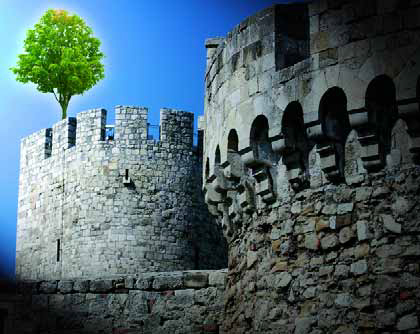ARTICLES
Advance Search
Aquatic Health
Aquatic Health, Fitness & Safety
Around the Internet
Aquatic Culture
Aquatic Technology
Artful Endeavors
Celebrity Corner
Life Aquatic
Must-See Watershapes
People with Cameras
Watershapes in the Headlines
Art/Architectural History
Book & Media Reviews
Commentaries, Interviews & Profiles
Concrete Science
Environment
Fountains
Geotechnical
Join the Dialogue
Landscape, Plants, Hardscape & Decks
Lighter Side
Ripples
Test Your Knowledge
The Aquatic Quiz
Other Waterfeatures (from birdbaths to lakes)
Outdoor Living, Fire Features, Amenities & Lighting
Plants
Ponds, Streams & Waterfalls
Pools & Spas
Professional Watershaping
Structures (Editor's Notes)
Travelogues & History
Water Chemistry
WaterShapes TV
WaterShapes World Blog
Web Links
Around the Internet
Aquatic Culture
Aquatic Technology
Artful Endeavors
Celebrity Corner
Life Aquatic
Must-See Watershapes
People with Cameras
Watershapes in the Headlines
Most of the time, residential construction projects that stretch beyond a half-decade in the making involve significant delays or work stoppages. The project pictured here – known hereabouts as “The Shell Pool” – took nearly six years to complete, and what’s unusual about it is that it was basically a continuous effort. Even when we weren’t on site, seldom did a day go by when we weren’t involved on some level in design work, engineering and/or project planning. Now that it’s finished, I can say without hesitation that this was the most detailed, refined, all-consuming project we at Platinum Poolcare Aquatech of Wheeling, Ill., have ever tackled. I can’t begin to calculate the collective number of hours spent in client and staff meetings, phone conversations, skull sessions and design-revision meetings – and that doesn’t include time spent on site in bringing this amazing project to fruition. Even compared to the many intricate commercial projects we’ve worked on through the years, this one set a new standard in my experience with respect both to the spirit of innovation and the mountains of patience required to get the job done. Today, with all that effort behind us, it’s a rare pleasure to
Certainly one of the world’s most unusual watershaping achievements, ‘Le Reve’ is a Las Vegas-style aquatic production that carries audiences into an amazing dream world of water, light, music and incredible acrobatic skill. To achieve the water effects, former Cirque du Soleil producer Franco Dragone turned to Aviram Müller and Canada’s Kaarajal Design Aquatique – and the result is a marriage of watershaping art and technology unlike any other. Franco Dragone’s design team first contacted me late in 2003. His company, which organizes groups of design firms to create some of the world’s most elaborate stage productions, was working on a new Las Vegas extravaganza for hotelier Steve Wynn. Wynn’s properties are famous for their water effects, including the wonderful fountains in front of Bellagio on the Las Vegas Strip. I was told that his then-current project, the Wynn Resort, was to feature similarly spectacular water elements – one of which was to be
Only three percent of the world’s water exists as fresh water – that is, water with low salinity and total dissolved solids of the sort found in lakes, rivers, reservoirs, ponds, streams and aquifers. It is arguably our most precious resource because, quite simply, we can’t get along without it. As populations grow around the world, the amount of fresh water available for drinking, irrigation, bathing and sanitation annually decreases on a per capita basis. These fresh-water supplies are replenished only by precipitation, so when droughts disrupt historical weather patterns, there’s trouble ahead – especially if the shortages hit highly populated areas. Today, it is estimated that one in six people on our planet lacks access to an adequate water supply. While the vast majority of those who endure this disadvantage live in other parts of the world, we in the United States are becoming more and more subject to supply shortages when localized droughts occur. Recent conditions in the southeastern United States are a prime illustration of what this entails: In Georgia, for example, water supplies recently hit 50-year lows. These conditions resulted in the imposition of all sorts of restrictions on water use, in some areas leading to bans on the installation of new watershapes. At Aquascape (St. Charles, Ill.), we’ve long believed that it’s our responsibility as professional watershapers to act responsibly in such circumstances, meaning in our case that
I recently read a short article in a construction magazine in which the writer described a fairly convoluted process by which he had “protected” a tree on the site where he was working. Basically, what he did was wrap the trunk in two-by-four studs, securing them in place vertically with some loops of metal strapping. In his estimation, this was just what he needed to keep the tree from being damaged by accidental equipment bumps – the boards, in effect, would suffer and the tree
If you’re paying even the slightest bit of attention to the world at large, you’ve probably heard more than you ever wanted to know about current economic conditions. Indeed, everything that has happened in the past year or so with both our national and the global economy has made it hard for some people to think optimistically about the future. These are perilous times, as some say, and in one way or another, I know we’re all being affected by what’s going on. But that doesn’t seem to be the whole story. In fact,
I imagine that many of you said “good riddance” instead of “farewell” to 2008 – and that almost as many of you might want to skip right over the looming uncertainty of 2009 completely and head directly into 2010. Nobody can jump
At a meeting in Phoenix in August 2008, Kirk Butler of Cactus Stone & Tile described watershape designers and builders as practitioners of "the science of selection" when it comes to deciding which products and materials to use in their projects. His observation immediately rang bells for me: At that point late in the summer, we
At a meeting in Phoenix in August 2008, Kirk Butler of Cactus Stone & Tile described watershape designers and builders as practitioners of "the science of selection" when it comes to deciding which products and materials to use in their projects. His observation immediately rang bells for me: At that point late in the summer, we




















The Home Front